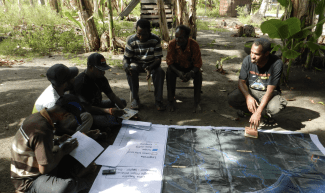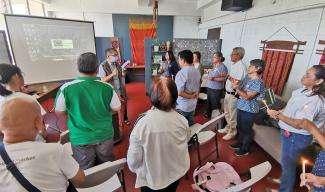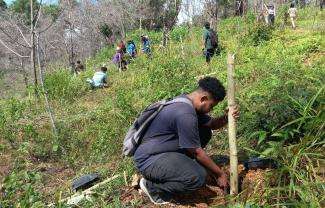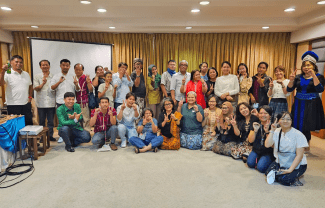As a new established district in West Papua Provinces of Indonesia, Tambrauw; the region in Bird Heads landscape of Papua Island facing a challenges to balancing the needs of government development, conservation of natural resources and economic development of Indigenous Papuan. Acknowledging the facts that 80% of 1,1 million ha of the region are designated as protection and conservation forests function that still primary, lack of public facilities, limited transportation access, the lowest level on the province human development index and the complexity of tenure rights the government through the political commitment and program has announcing the intent to develop a conservation district. Since 2012 the join program was initiated to connects the program of the districts with the concern that Samdhana and partners has in facilitation clarifying of tenure rights to support sustainable land uses and forests development in Papua. The overall works then be sharpening in 2013 with joint works to build enabling condition of conservation development within clear tenure rights.
Customary boundary mapping, legal recognition of customary rights, conservation institution design and its legal regulation drafts are sets of activities Samdhana and partners in collaboration with Local Government and other International NGO such as WWF has supporting since 2013. Recently there are two indicative tribe boundary maps that cover 670,000 ha and 3 clans maps in about 6,591 ha have available to support the next steps of projects implementation in the District. Capacity building that growth from collaboration among different conservationist parties to local actors is also the package that the projects been supporting through a serial meeting and join activities.
Tambrauw is one of the high biodiversity hotspot in Papua Island but not yet well known except as the place of Leather Back Sea turtles nesting sites. But with it hilly geographic areas and dense primary forests covers the areas have keeps and deposits huge amount of naturals resources that recently included in the lists of natural resources investment targets. As the natural barrier for the bird head ecosystems because its position in the upstream that regulates the water ows to other districts such as Major city of Sorong and Manokwari opening the landscape would have a huge negative ecological impact to the landscape. The condition of IPs that live on strong customary rights claim and depending almost 90% of their livelihood to the forests and land uses extraction emphasizing the importance of integrative landscape and livelihood development approaches to interpreting the niece of local government on conservation code of development within clear tenure rights.
Commitment of the local government that rarely found in the two provinces of the Papua-Indonesia is crucial to be supported. A big chance to develop a model of how conservation areas management under clear tenure emerging in the districts to showing that when rights of Indigenous Papuan be legally secured and protected and when they have a good capacity in natural resources governance and management.




